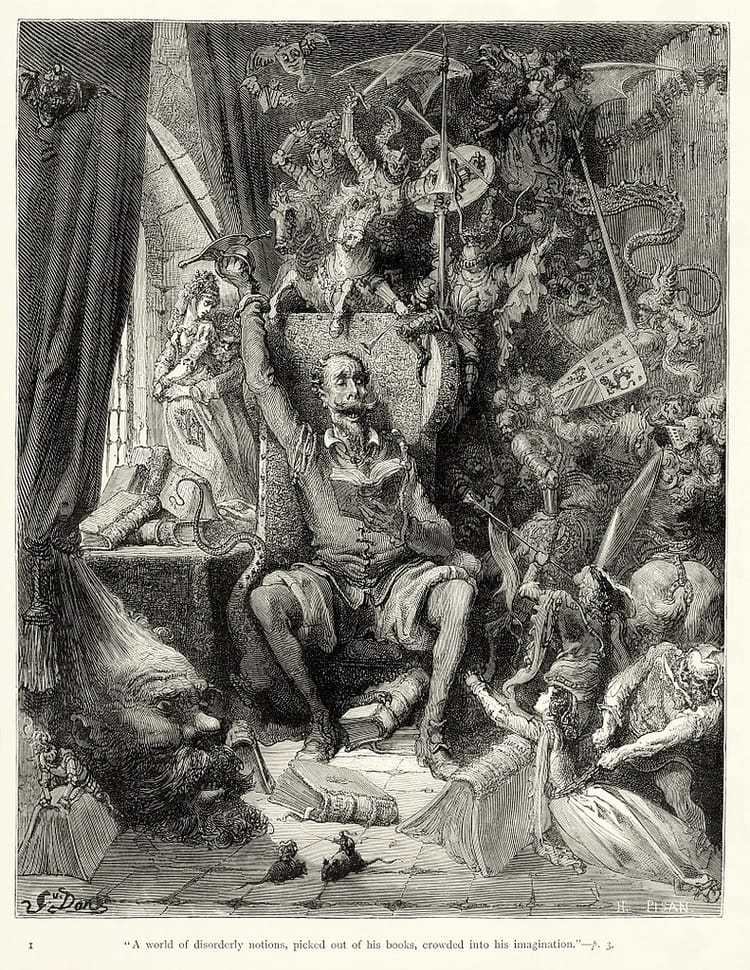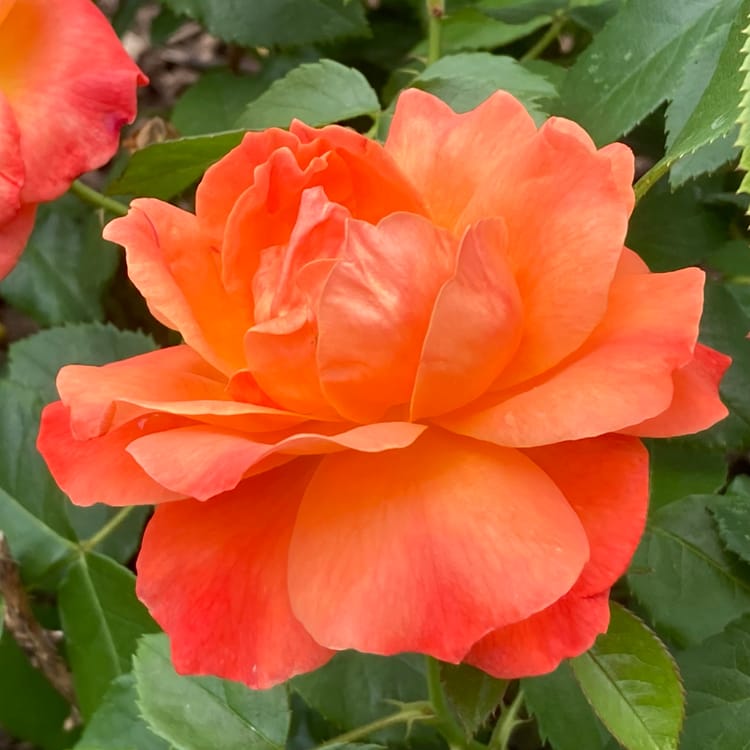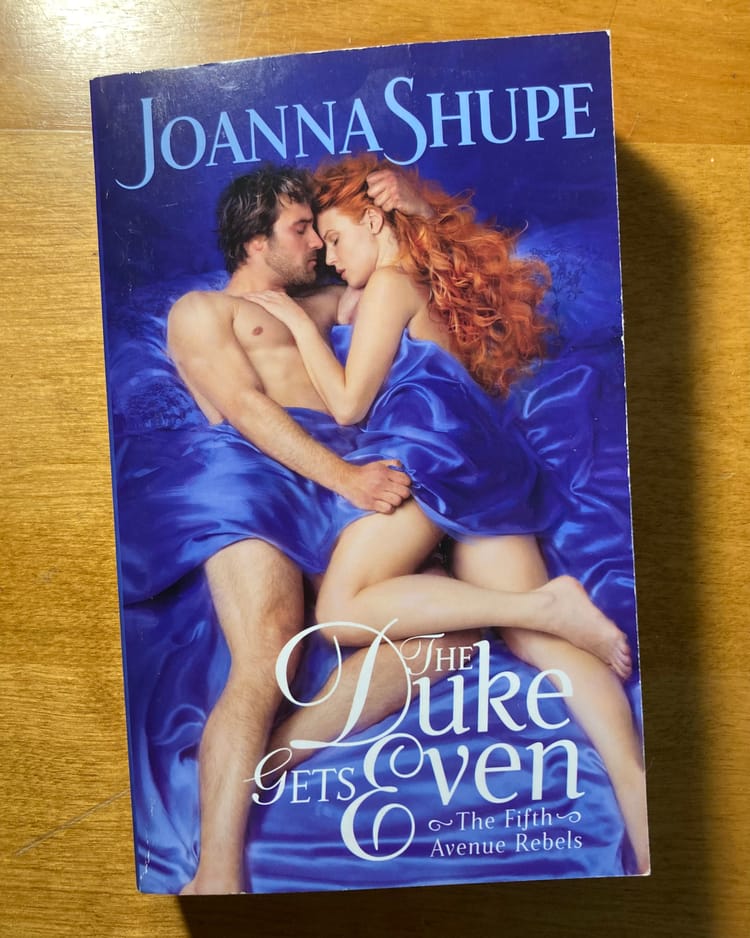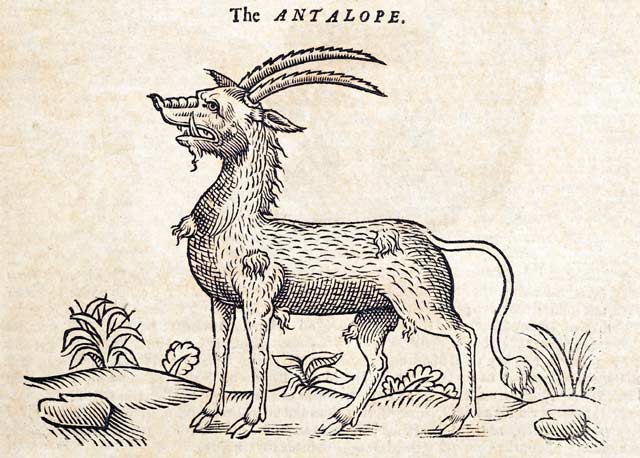on looking, part 3
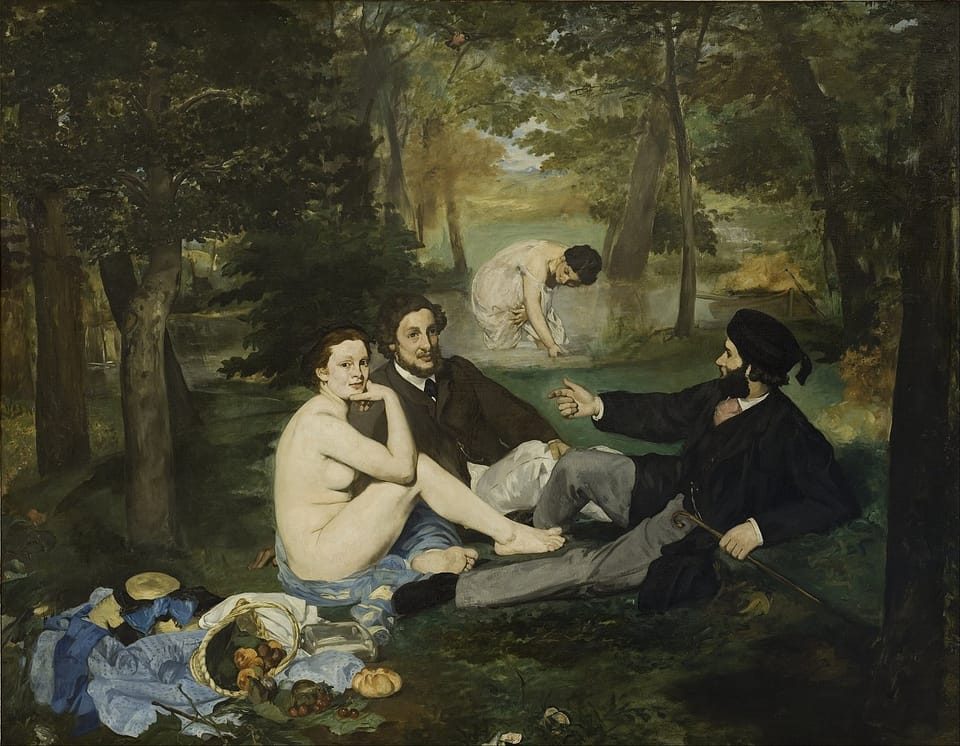
Le Déjeuner sur l’herbe did not come with the Olympia to New York City this fall; instead of the painting, we saw a study for the painting. This painting infuriated me from the moment I first saw a reproduction of it. Why doesn’t the woman in the foreground get to wear clothing? And I cannot help but share in Maxine Greene’s irritation (as I remember her commenting in class once) with how the man on the right is pointing as he talks. Definitely mansplaining! Though we didn’t yet have that word in 1998.
I look at the painting differently now. For one thing, the nude woman appears to be so relaxed, even bemused; she is looking elsewhere, has other things on her mind, and is clearly not listening to the mansplaining of the mansplainer. For another thing, like so many of Édouard Manet’s paintings, this painting seems to be in part a wry joke, set up by inserting contemporary subjects into a scene that formally suggests the mythological or historical concerns of the works of the great masters. But the painting is far more than a mere joke. This commentary on Le Déjeuner sur l’herbe by Émile Zola, for example, particularly the sentence I have emphasized below, has been much on my mind lately:
The Luncheon on the Grass is the greatest work of Édouard Manet, one in which he realizes the dream of all painters: to place figures of natural grandeur in a landscape. We know the power with which he vanquished this difficulty. There are some leaves, some tree trunks, and, in the background, a river in which a chemise-wearing woman bathes; in the foreground, two young men are seated across from a second woman who has just exited the water and who dries her naked skin in the open air. This nude woman has scandalized the public, who see only her in the canvas. My God! What indecency: a woman without the slightest covering between two clothed men! That has never been seen. And this belief is a gross error, for in the Louvre there are more than fifty paintings in which are found mixes of persons clothed and nude. But no one goes to the Louvre to be scandalized. The crowd has kept itself moreover from judging The Luncheon on the Grass like a veritable work of art should be judged; they see in it only some people who are having a picnic, finishing bathing, and they believed that the artist had placed an obscene intent in the disposition of the subject, while the artist had simply sought to obtain vibrant oppositions and a straightforward audience. Painters, especially Édouard Manet, who is an analytic painter, do not have this preoccupation with the subject which torments the crowd above all; the subject, for them, is merely a pretext to paint, while for the crowd, the subject alone exists. Thus, assuredly, the nude woman of The Luncheon on the Grass is only there to furnish the artist the occasion to paint a bit of flesh. That which must be seen in the painting is not a luncheon on the grass; it is the entire landscape, with its vigors and its finesses, with its foregrounds so large, so solid, and its backgrounds of a light delicateness; it is this firm modeled flesh under great spots of light, these tissues supple and strong, and particularly this delicious silhouette of a woman wearing a chemise who makes, in the background, an adorable dapple of white in the milieu of green leaves. It is, in short, this vast ensemble, full of atmosphere, this corner of nature rendered with a simplicity so just, all of this admirable page in which an artist has placed all the particular and rare elements which are in him.
Now, I would not go so far as to suggest that the subject matter of Déjeuner sur l’herbe is arbitrary; nor do I interpret Zola as making any such claim. But what I like about his description of Manet as an “analytic painter” is how it foregrounds the materiality of the artist’s concern—the painter’s love of paint.
Artists love their materials in ways that people who do not make art might not understand. I often think of this passage by Annie Dillard:
A well-known writer got collared by a university student who asked, “Do you think I could be a writer?”
“Well,” the writer said, “I don’t know. . . . Do you like sentences?”
The writer could see the student’s amazement. Sentences? Do I like sentences? I am 20 years old and do I like sentences? If he had liked sentences, of course, he could begin, like a joyful painter I knew. I asked him how he came to be a painter. He said, “I liked the smell of the paint.”
Do I like sentences? My god, yes I do. As I like gridded Moleskine journals, a type of college-ruled notepad that I can get only at Staples, black Flair medium felt-tip pens, and Prismacolor pencils in all the colors. My pleasure in these things might seem to be beside the point to everyone but me, because the versions of my poems that most other people read are not the versions written with a Flair pen on a notepad. And if I have to, say in order to capture a turn of phrase before it dissolves in my mind, I’ll write with a ballpoint pen on the back of an envelope. The essential material of my work is words. Whereas the essential material of a painting is paint.
“For the crowd, the subject alone exists,” writes Zola, and these words make sense for me of the common contempt for abstract painting. If there is no evident subject to look at in a painting, then some people—those in Zola’s tormented crowd—don’t know what to look at. What is there to see, if all there is to see is paint?
Of course, in any painting, all that you are looking at is paint. And even in a painting with a clearly evident subject, I often study the paint, as in Wheat Field with Cypresses by Vincent van Gogh.
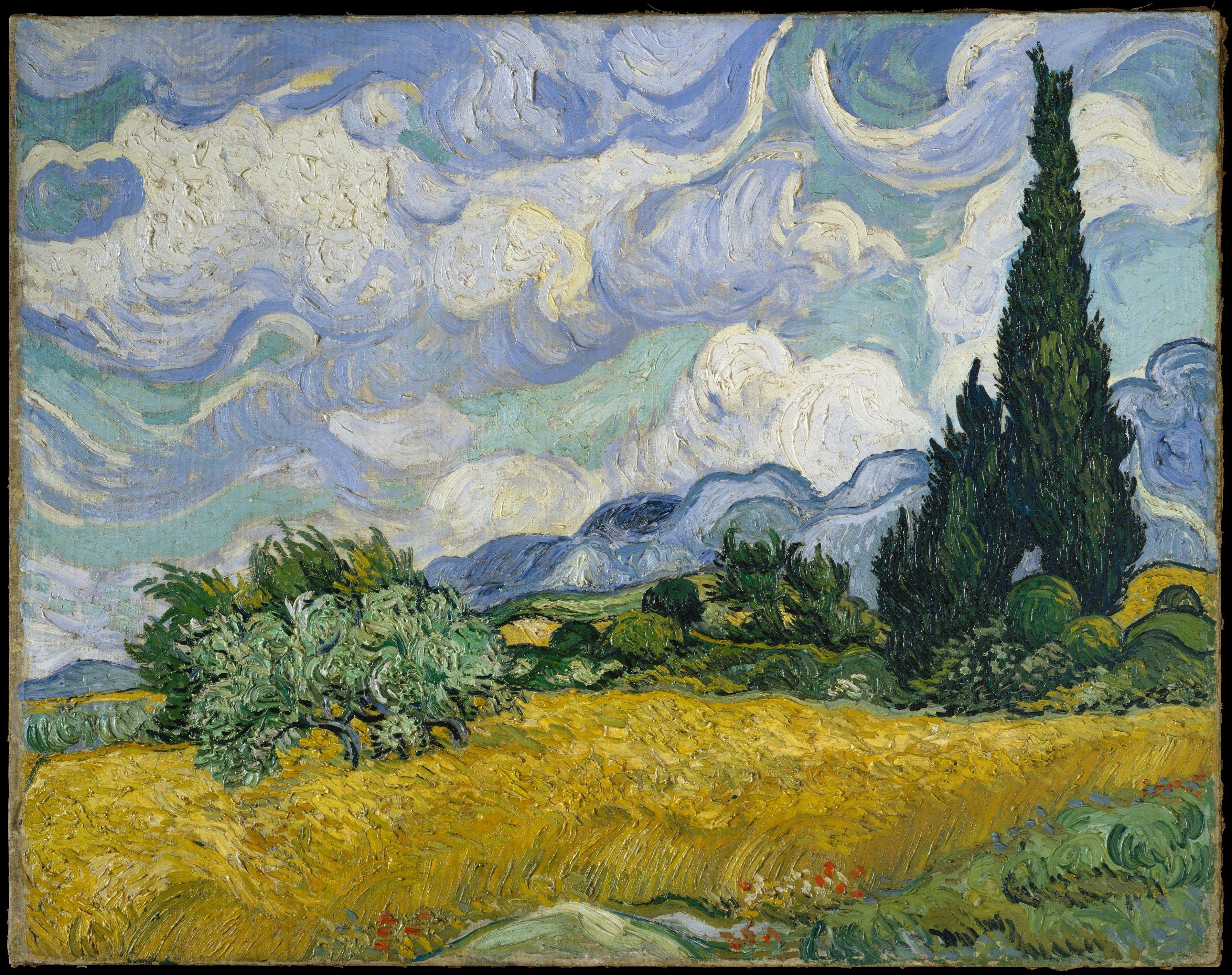
The digital image cannot capture the texture of the impasto that I love in this painting, especially in the turbulent sky. Those white-and-blue swirls appear to be cumulus clouds—the happy clouds of a bright summer day—but, rendered in thick paint as they are, they don’t seem to be drifting calmly across the sky as I usually see them. There’s something unsettled in this landscape: too much sunlight, too much beauty, it’s all too too much.
In my most recent trip to the Met, I noticed that the roses in this still life are much like the clouds in Wheat Field with Cypresses: thick and swirly.
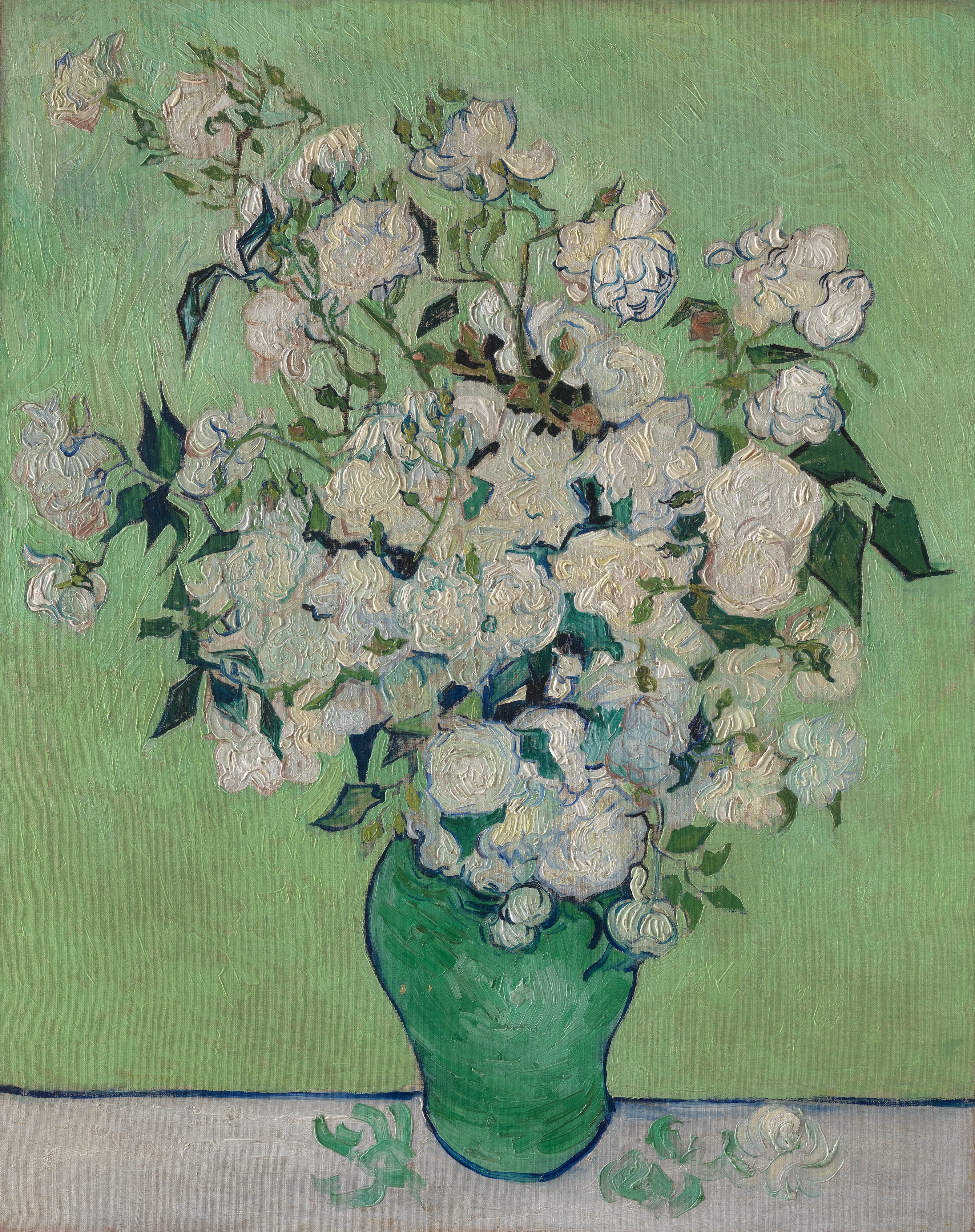
According to the Met, though, those roses were once pink but have faded. I want to go back now and look again to study the traces of pink in the paint that I did not see before.
Another painting I’ve been studying is this one of Claude Monet’s water lilies at Giverny.
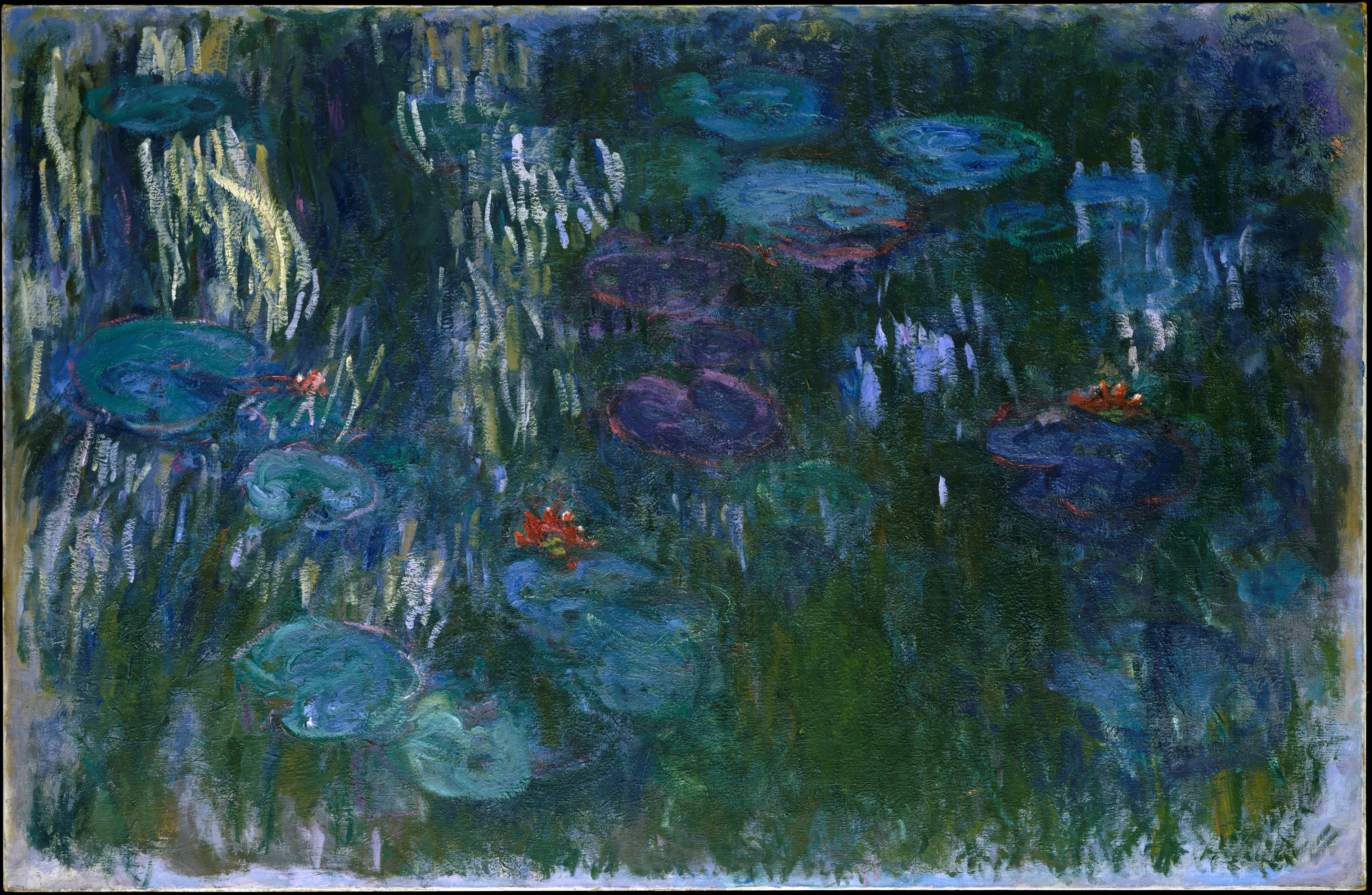
Both from a distance and in the digital image, this painting looks sketchy, like a dashed-off pastel drawing. Studied closely, however, the painting is clearly made of paint, laid thickly and it seems quickly on the canvas to suggest water, lily pads, lilies, and willow leaves. In this work, Monet’s looking and looking and looking at his water lilies and rendering them again and again in paint over the years resulted in something like abstraction.
This work is the work of an old man; he painted it in his mid-to-late seventies, after a lifetime of study and practice. Presumably Monet knew what he was doing when he made it. But, notably, contempt for abstract art is often expressed through the claim that a four-year-old child could make that.
First of all, no they couldn’t. But also, this claim expresses contempt not just for abstract art, but also for children.
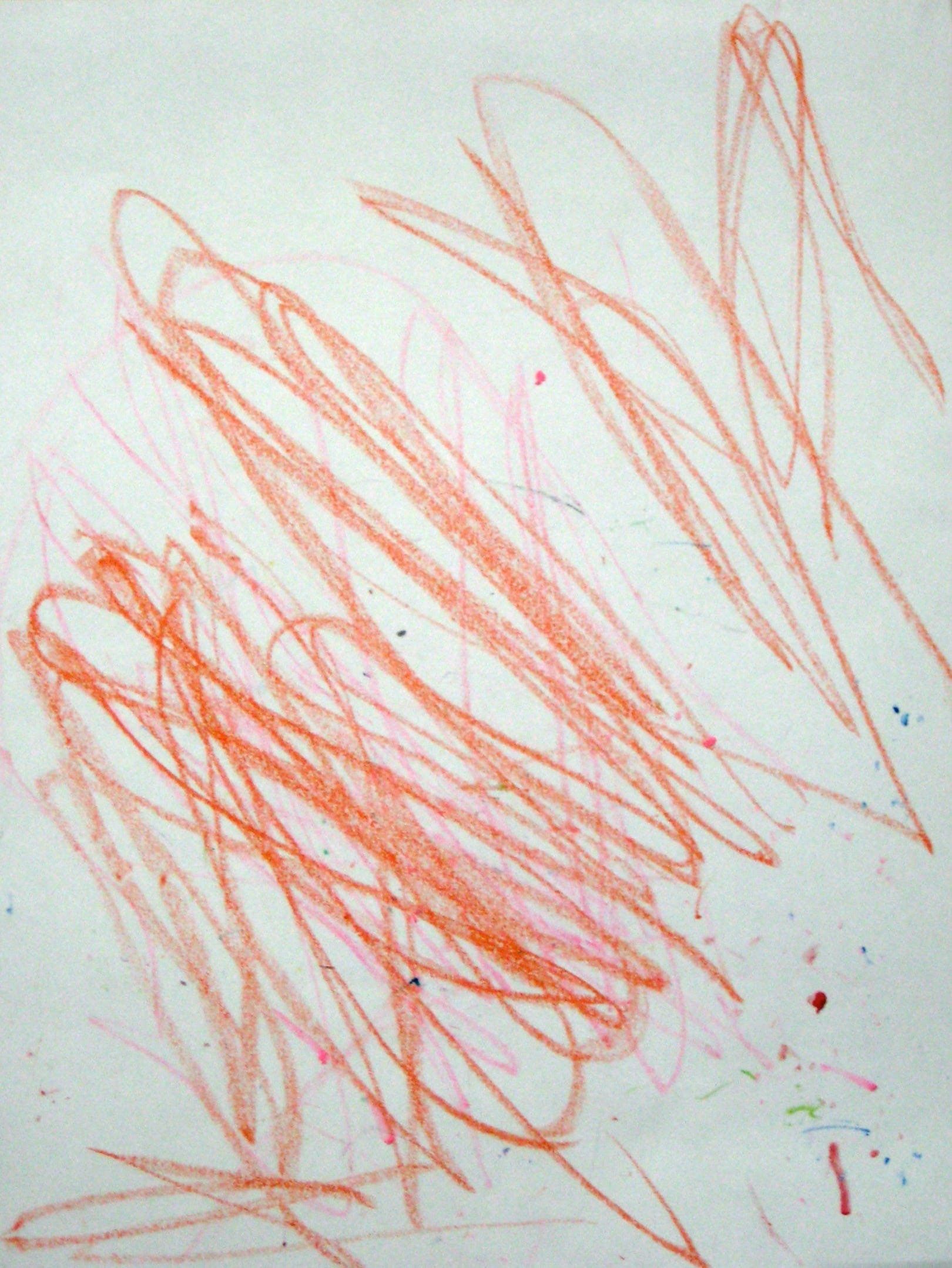
This drawing, made by a 22-month-old child, is all energy, pleasure, and curiosity: energy and pleasure in the gesture, and pleasure in and curiosity about the materials. (What gives more pleasure in this world than a fresh box of good crayons?) When I first laid eyes on this drawing, it revealed to me the meaning of Suzuki Roshi’s words: “In the beginner’s mind there are many possibilities; in the expert’s there are few.”
In the conclusion of the same talk, Suzuki Roshi says, “This is also the real secret of the arts: always be a beginner.” In Monet’s water lilies and in Jackson Pollock’s Autumn Rhythm I see the vitality and curiosity of beginner’s mind. True, these artists have a mastery of their materials that is beyond my comprehension—how, for example, did Pollock orchestrate the accidents of how paint drips and splatters to produce such a gorgeous composition? But it seems to me that these works arise from the investigations of an artist with questions, not from the assertions of one who believes he has found answers. The artist maintains the playful experimentation of a child—just with far greater knowledge and skill.
Some of the connections I drew in this essay arose as I wrote it; others arose in conversations with my husband, himself an abstract painter. He recently started a Substack newsletter where he will occasionally share his thoughts on art, beginning with his confrontation with another abstract artist, Cy Twombly—check it out.
